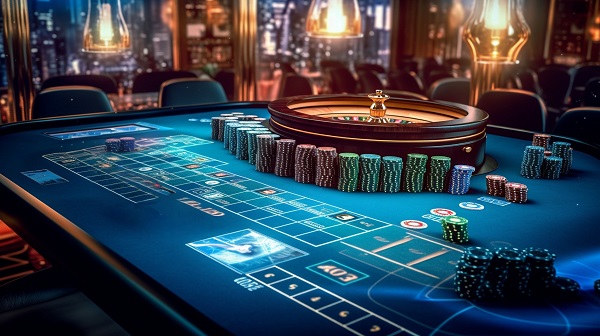Casino Game Development Process

In the realm of casino game development, each step plays a crucial role in shaping the final product. From the initial concept to the coding and testing phases, precision and creativity are essential. However, when a new concept arises during the development process, it can potentially change the game’s direction. Developers must navigate unexpected challenges while maintaining the core vision of the game. Understanding the complexities of casino game development sheds light on how developers handle such situations. In the realm of casino game development, each step plays a crucial role in shaping the final product. From the initial concept to the coding and testing phases, precision and creativity are essential. However, when a new concept arises during the development process, it can potentially change the game’s direction. Developers must navigate unexpected challenges while maintaining the core vision of the game. Understanding the complexities of casino game RA88 development sheds light on how developers handle such situations.
Conceptualization
During the conceptualization phase of casino game development, the main objective is to establish the core idea and gameplay mechanics that will shape the project. This process involves generating creative concepts that aim to engage players, taking into account elements such as theme, target demographic, and distinctive features.
Researching current trends in the gaming industry is essential to ensure the game stands out in a competitive market. Setting clear objectives and a cohesive vision for the game is crucial to provide direction for the development process.
Design and Prototyping
Once the core concept is established in the conceptualization phase, the casino game development process progresses to the Design and Prototyping stage. Here, the focus is on creating the visual and interactive elements of the game. Designers work on crafting the game’s appearance, including characters, animations, color schemes, and overall aesthetics.
Prototyping follows this design phase, where initial versions of the game are developed to test mechanics and gameplay. This iterative process allows for adjustments to be made before moving into full development. Emphasis is placed on user experience and interface design to ensure a seamless gameplay experience.
Development and Programming
Moving on from the design and prototyping phase, the development and programming stage is where the technical foundation of the casino game is constructed. This phase involves the actual coding, integration of graphics and audio elements, and the implementation of game mechanics. Developers utilize programming languages such as C++, Java, or HTML5 to build the game’s functionality. They concentrate on aspects like game logic, user interface design, payment systems integration, and the inclusion of random number generators for ensuring fairness.
The programming process includes thorough testing to guarantee smooth gameplay and eliminate any bugs. Working closely with designers, programmers transform the creative concept into a fully operational and captivating casino game.
Testing and Quality Assurance
Ensuring the functionality and reliability of the developed casino game requires rigorous testing and quality assurance processes. Each aspect of the game, including gameplay mechanics, graphics, and sound, undergoes thorough scrutiny to identify and address any issues. Quality assurance specialists meticulously review the game to ensure it aligns with industry standards and meets player expectations.
Various testing methods, such as functionality testing, compatibility testing, and performance testing, are employed to ensure a seamless gaming experience. Bugs and glitches are systematically identified, documented, and promptly resolved to enhance the overall quality of the game.
Deployment and Launch
Prior to the deployment and launch of a casino game, developers undertake meticulous preparations to finalize the game for distribution to players. This phase involves packaging the game, ensuring compatibility across various platforms, and conducting final checks to ensure a smooth player experience. Once the game is deemed ready, it’s uploaded to app stores or online platforms for player access.
Marketing efforts are crucial at this stage to generate interest and attract players to try the newly launched game. Implementing feedback mechanisms is essential to gather player insights for future updates and enhancements.
The deployment and launch phase represents a pivotal moment that can impact the success and longevity of the casino game in the competitive gaming market.
Conclusion
You’ve now completed the casino game development process, from conceptualization to deployment and launch. By focusing on creativity, design, programming, testing, and marketing, you’ve successfully brought your game to life. Remember to always prioritize player engagement and ensure a smooth gameplay experience. Good luck with your future game development endeavors!